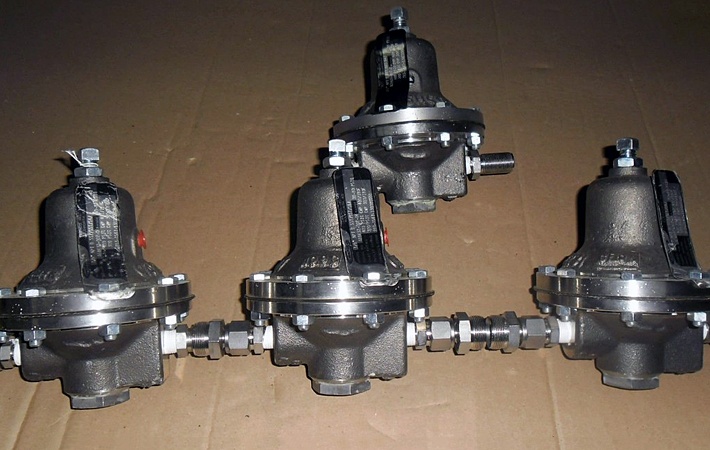
 A pressure reducing regulator is commonly used to manually control pressure of a liquid, gas or steam. Choosing the right regulator for your application can be challenging. There are 5 variables required to size any pressure regulator and properly calculate Cv: upstream pressure, downstream pressure, flow range, temperature and fluid type. We define each variable and talk about why it’s crucial to sizing a pressure regulator.
A pressure reducing regulator is commonly used to manually control pressure of a liquid, gas or steam. Choosing the right regulator for your application can be challenging. There are 5 variables required to size any pressure regulator and properly calculate Cv: upstream pressure, downstream pressure, flow range, temperature and fluid type. We define each variable and talk about why it’s crucial to sizing a pressure regulator.
**Please note: Cv is a coefficient of flow for valve sizing. It’s used to quantify valve flow performance and can vary with both size and style of the valve or regulator. Once you calculate the required Cv range, you’ll know the valve or regulator is sized correctly to handle the actual flow.
Supply pressure or Inlet pressure. This is the pressure upstream of the regulator. This pressure could be coming off of a main header at 100 psi. If it is a higher pressure, such as 1,000 psi, and your goal is to regulate a much lower pressure, less than 100 psi, then a second regulator may be required to knock down the pressure in two stages: one high pressure regulator and one low pressure regulator.
Outlet or Control Pressure set point or range. This is the pressure downstream of the pressure reducing regulator. The pressure levels are what you are attempting to control. It could be a specific pressure point, like 30 psi, or a range of 5 to 20 psi. The difference between upstream and downstream pressure is called a “pressure drop” or “pressure differential”.
It’s a good idea to size the regulator at a minimum of 3 separate points in order to get a range of flow requirement. This gives you a safety factor, so the regulator is not over or under-sized.
Temperature can affect the required Cv. Note that temperature does not affect Cv nearly as much as pressure and flow.
Determine what fluid is going through the regulator. Is it liquid, gas or steam? What are its properties? Understand that sizing formulas are different for each type of fluid. For example, the formula for critical pressure drop is different than non-critical pressure drop for gases. For steam, you must know whether it’s saturated steam or super heated (higher temperature).
A regulator cannot be accurately sized without knowing these 5 variables. Understand that changing any of the above values could get you into a completely different regulator.
After sizing, the next step is to select your regulator by identifying the following criteria:
These Stories on Valves
Headquarters and Service Center
Located outside Green Bay, WI
707 Ford Street
Kimberly, WI 54136
920-733-4425
OptiFlow Design and Build Center
1002 Truman Street
Kimberly, WI 54136
920-733-4425
Burnsville Service Center
12265 Nicollet Avenue
Burnsville, MN 55337
952-444-1949
Grand Rapids Service Center
26489 Industrial Blvd
Cohasset, MN 55721
952-444-1949
© Copyright 2024. Crane Engineering. All Rights Reserved. Privacy Policy.